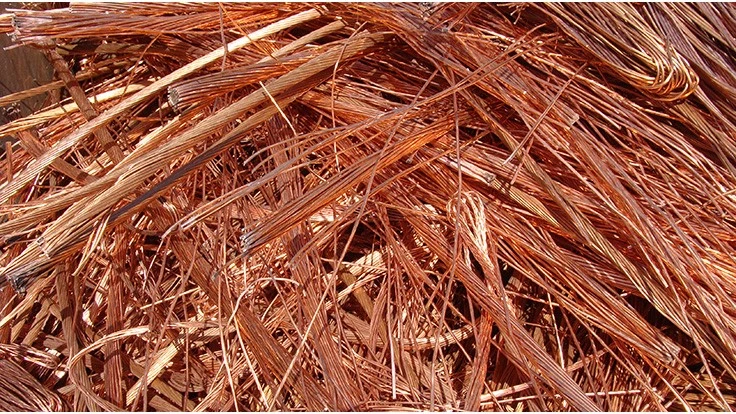
I had the good fortune to attend and participate in the Institute of Scrap Recycling Industries (ISRI) Copper Roundtable discussion held in Chicago in September.
Chris Greenfield, vice president at Ohio-based Federal Metals, moderated the session, which also included Tim Strelitz, president of California Metal–X, and Edward Meir, president of Connecticut-based Commodity Research Group. I won’t give any secrets away because I know some people (Tim) are sensitive about their age, but I suspect there was almost 175 years of industry experience and knowledge in that panel.
One of the main issues that came up was the need for more copper in the United States that is necessary to achieve the “green energy” transition. Taking this a step further, it has become apparent that the recycling of copper has reached a long-awaited and critically important turning point, with new secondary smelting projects announced, underway or operating already.
Over many decades, there were five major secondary smelters operating in the U.S., but one by one they closed due to outdated technology or financial considerations, and, most importantly, because of environmental compliance issues. Chemetco, based in Illinois was the last one operating, but it was shut down in 2001. Thus, over the past 20 years, lower grades of copper scrap that used to be processed here wound up being exported to other countries, with China being the main destination.
Regrettably, this contributed to a significant decline in the production of refined copper, as well as a growing dependence on imported metal to meet our needs. The facts and figures underlying these trends were laid out in previous issues of The Copper Journal, with the December 2021 issue in particular outlining the changes.
Copper Development Association (CDA) statistics show that production and consumption of refined copper have been in an overall declining trend in the U.S., with production falling from about 3.3 million tons in 2000 to less than 1.9 million in 2020.
For us, it’s hard to hard to believe this has been happening in the world’s largest economy. We can’t help but think that someone, somewhere in a high-level government position is asleep at the switch.
Regarding imports of refined copper compared with exports of copper-based scrap, statistics clearly show that while we are shipping scrap out, ultimately, we are taking that copper back in imports of copper contained in air conditioners, appliances, electrical devices and a multitude of other items.
Smelter production of copper scrap effectively ceased in the U.S. in 2002, thereby contributing to the exponential increase in scrap exports. As an aside, 2002 saw China surpassing the U.S. as the world’s largest consumer of copper and other industrial materials and also marked the beginning of the “super cycle” in commodities. Last year, nearly a million metric tons of copper scrap were exported from the U.S., with China being the leading destination.
Given rising geopolitical tensions, particularly between the U.S. and China over Taiwan, companies have to rethink their business models, and at a minimum, have a Plan B in place if international trade is impacted as we saw in the Russia/Ukraine situation.
So, the new secondary smelting capacity coming on stream can’t come fast enough, because we need more metal, and we must be positioned to have it recycled here.
Taking this a step further, it has been said the timeline from discovering an ore body to bringing it into production can take up to 12 years as compared with say two to three years for a secondary smelting facility to be built. Major mining properties are in the development stage here, but they’ve been tied up in legal knots for too many years, despite many millions of dollars that have already been spent.
Interestingly, more than a few people we spoke to in Chicago said their domestic business has been picking up lately because some of their customers were beginning to reshore a portion of their production requirements to eliminate, or get around, supply chain problems.
I will take the liberty here to repeat what I said at the Copper Roundtable discussion: I believe the copper industry of the U.S. is on the cusp of a major turning point, as the declining trends of the past several years are going to reverse and will begin rising in the years ahead.
The author is the owner of John E Gross Consulting Inc. and publisher of The Copper Journal, available at www.jegross.com.
Latest from Recycling Today
- BMW Group, Encory launch 'direct recycling’ of batteries
- Loom Carbon, RTI International partner to scale textile recycling technology
- Goodwill Industries of West Michigan, American Glass Mosaics partner to divert glass from landfill
- CARI forms federal advocacy partnership
- Monthly packaging papers shipments down in November
- STEEL Act aims to enhance trade enforcement to prevent dumping of steel in the US
- San Francisco schools introduce compostable lunch trays
- Aduro graduates from Shell GameChanger program





